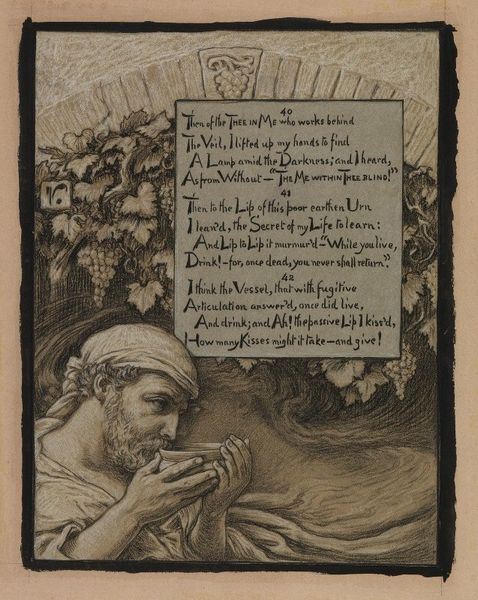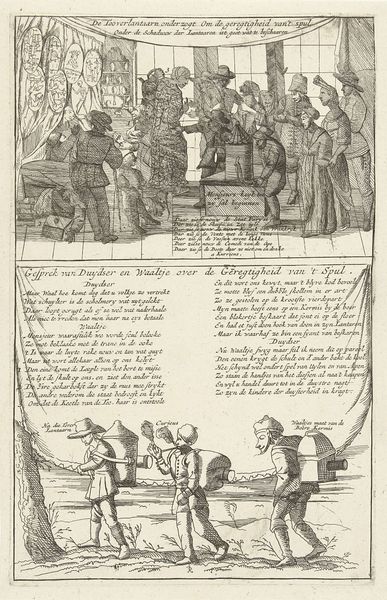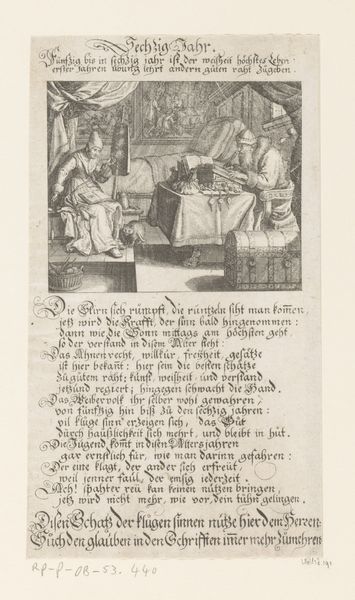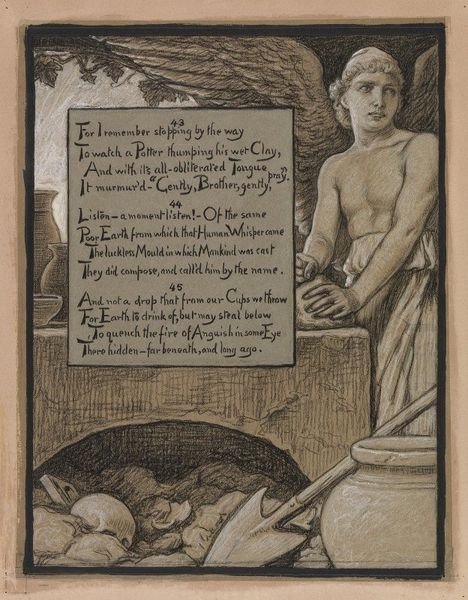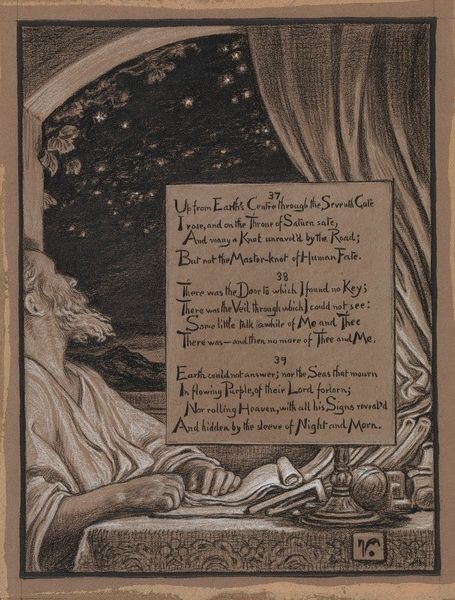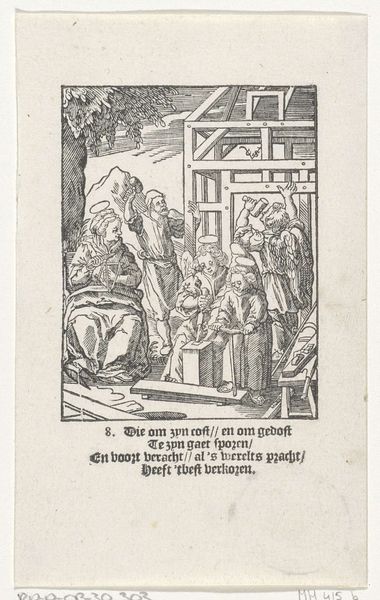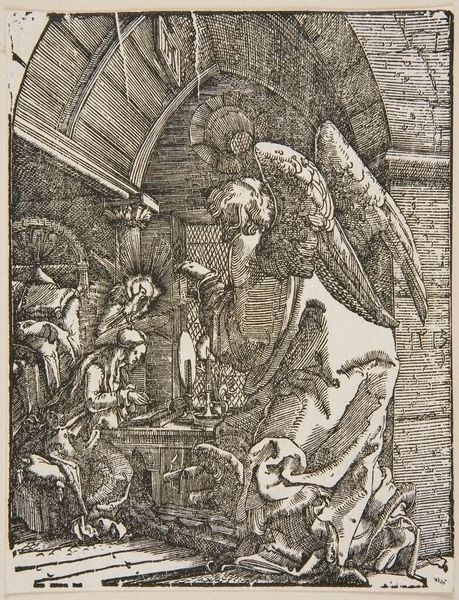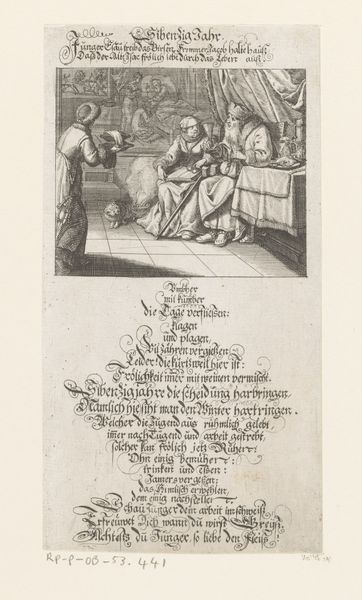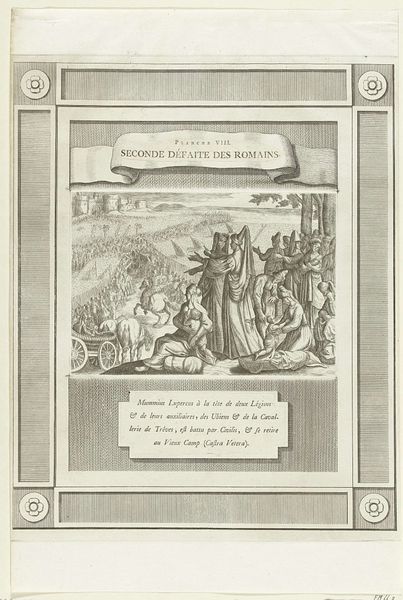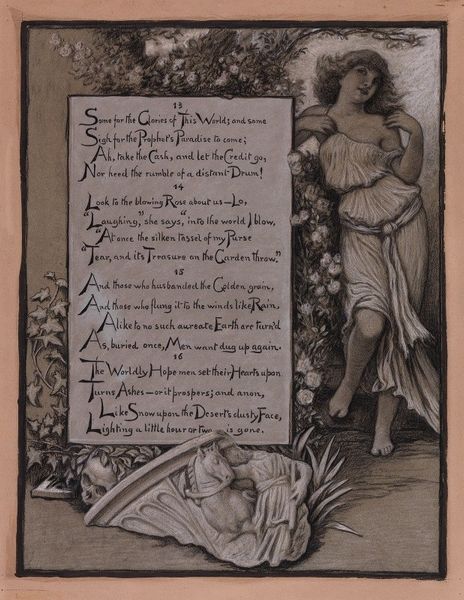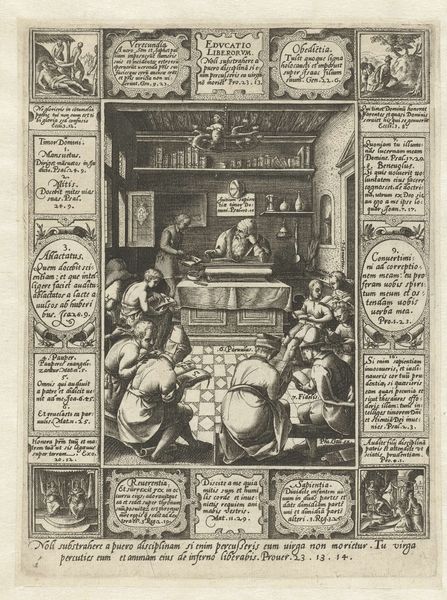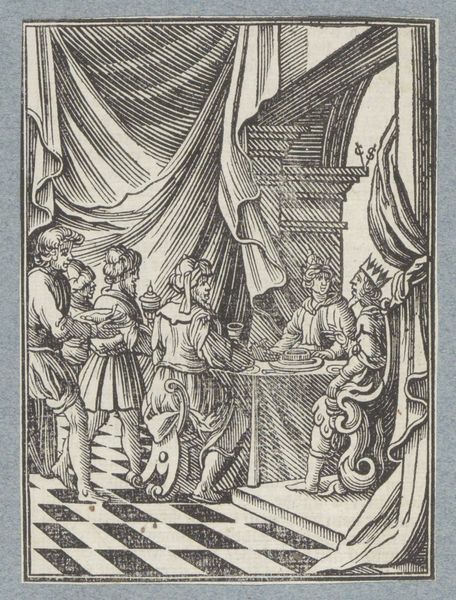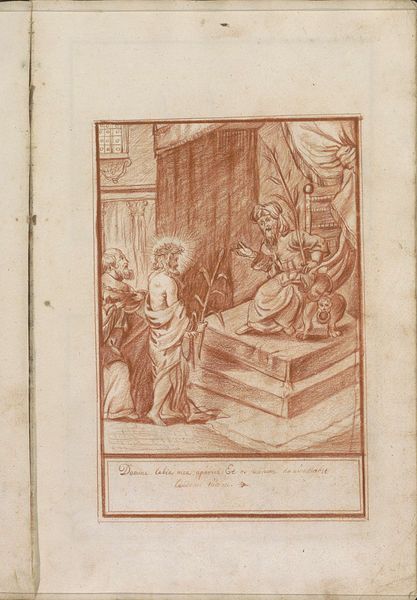
Copyright: Public Domain: Artvee
Curator: This is "The Loquacious Vessels" by Elihu Vedder, created around 1883 to 1884, employing colored pencils for a subtly vibrant effect. What strikes you first about this composition? Editor: Well, initially it feels like a layered commentary on creation and dialogue, the script hovering above these almost… spectral figures and earthy pots gives a sense of a threshold or a point of reflection between the physical and the philosophical. It’s like the pots themselves are in conversation, mediated by human input, their making and trade are the subject. Curator: Precisely! Vedder masterfully utilizes color and shade. Look closely at the gradations of the clay vessels; they convey a sense of weight and texture that echoes the labor involved in their production. This invokes ideas of commodification and artistic creation. Editor: Absolutely, there is also this palpable feeling of societal reflection, that comes from those peering figures and their seeming discussion about the pottery- from maker to seller to consumer, they question the pot’s entire value system. It appears to criticize capitalistic pursuits in artistry. I mean, what even makes the "Pot"? Who decides? It almost seems cynical of mass production, by romanticizing handmade work. Curator: You highlight a significant element. Vedder’s choice of materials, colored pencils, adds another layer. In using an accessible, almost "craft" medium for high art, he challenges those hierarchical divisions. He makes high art, in effect. accessible to a more democratic field of production and thought. Editor: Interesting! And consider how these voices engage with ideas of mortality, as hinted by the phrases about oblivion and loss. Vedder positions art, in this case, these pots, not just as products but as receptacles of stories and human experience in relationship to societal values. These forms become deeply embedded cultural artifacts in his storytelling. Curator: Indeed, the positioning of the verses front and center underscores that relationship between art object, poetic reflection, and social dialogue. Editor: Seeing these multiple layers intertwined allows for this deeply rooted socio-historical understanding. We're drawn into the cultural landscape of artistry at the intersection of consumption, commentary, production and value systems within Vedder's gaze. Curator: And considering the artistic merit and value of the handmade, too, Vedder invites us to re-examine what we prioritize materially and artistically. A potent reminder.
Comments
No comments
Be the first to comment and join the conversation on the ultimate creative platform.
